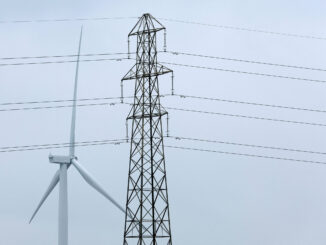
The following commentary was written by Anya Schoolman, executive director of Solar United Neighbors; and Sachu Constantine, executive director of Vote Solar. See our commentary guidelines for more information.
The days may be getting longer across the United States, but darkness caused by winter blackouts continues its grip from coast to coast.
Michigan and California are the latest victims — hundreds of thousands went without electricity for days as fragile power grids failed following recent storms. In December, as unusually frigid air crept across the United States, the Tennessee Valley Authority (TVA), Entergy, and Duke Energy told customers there was not enough electricity to meet the increased demand. These utilities instituted rolling blackouts for more than 1.2 million customers. This was the first time this had happened in TVA’s 90-year history. Across the United States, capacity shortfalls and broken infrastructure are becoming all too common.
While many of us probably tend to take electricity for granted, prolonged loss of power can be dangerous and even life-threatening. For those with medical conditions, infants and the elderly, and people living paycheck-to-paycheck, being without electricity is much more than an inconvenience.
The issue isn’t the kind of brief blackout that results from a gusty summer storm. It’s about the kind of power disruption that is becoming all too frequent in regions across the nation when America’s power grid is pushed to the brink of disaster. As severe weather events continue to disrupt daily life and electricity demand continues to rise, it’s clear that we should be pulling out all the stops to build a strong and resilient grid that can keep the lights on for everyone. Yet utilities and policymakers, who control much of America’s power infrastructure, are actively blocking perfectly good electrons from reaching your home.
Sign up for Energy News Weekly
Get the most important energy news of the week delivered directly to your inbox.
Over the course of 2022, more than 140 million people in 40 states were directly impacted by either requests to conserve energy or the complete loss of power. High-profile cases in California and Texas receive much of the attention when temperatures hit extreme lows or highs, but growing crises in areas like New England, the Midwest, the Mid Atlantic and the region stretching from Tennessee to the Carolinas should also be alarming.
The problem isn’t restricted to just those areas. Power regulators in Ohio, Wisconsin and Michigan are calling for investigations into major recent outages. Altogether, the U.S. including Puerto Rico faced more outages than any other developed country in 2022. The nation’s electric distribution networks are not prepared for today’s needs. And, they certainly won’t be able to handle tomorrow’s as a national push to electrify increases demand for everything from heating and cooling our homes to charging our vehicles.
So where are those perfectly good electrons hiding? They’re in plain sight. Solar panels on rooftops, batteries installed in home garages, or even in electric vehicles are a rapidly expanding source, part of a class of assets known as distributed energy resources (DERs). Together they can be positioned to supplement the power grid when demand grows, and discharge during periods of peak demand. They can also provide vital temporary power needs when natural disasters occur. Across the nation there are over 51 gigawatts of distributed solar installed — that’s equivalent to the power generated by 51 nuclear plants.
Leveraging these resources makes an immediate difference. Let’s take two examples. During the California heat wave in September, customers were asked by CAISO, the California Independent System Operator, to conserve power for a full week. Blackouts were avoided thanks to the presence of small-scale solar generation along with more than eighty thousand distributed batteries. And in Puerto Rico, whose residents are all-too-familiar with paying exorbitant costs for unreliable service, Hurricane Fiona knocked out power for nearly the entire island. Many households did not see electricity restored for more than two weeks. Fortunately, community and grassroots leaders proved that DERs can keep communities safe in times of chaos. Fifty thousand solar and battery systems helped keep critical services running and provided many residents with at least enough power to keep their phones charged.
Plugging these resources into the electric grid is the logical solution to build resiliency and meet growing demand, yet many states and local utilities continue to resist full integration of distributed solar and batteries. This is because they interfere with utility profits or run counter to political agendas regarding clean energy. Even in California, only three-quarters of the available distributed power could be tapped during the heatwave due to policy restrictions.
History suggests 2023 will only see the situation deteriorate further. New signs are popping up state by state. Officials in Colorado warn they may be unable to meet summer demands. Iowa regulators are asking utilities to explain their plan for addressing upcoming grid reliability issues. Meanwhile, some states are moving in the right direction — like Massachusetts, New York, Hawaii and others — with aggregated DERs programs.
The solution is already standing by on rooftops and in buildings across the U.S. More is ready to be deployed quickly. It’s time to move these projects forward. From coast to coast and beyond, it’s time to speak truth to power — both the powerful policymakers as well as power generators and distributors.
Put simply, leveraging DERs installed to meet consumer demand is cheaper and faster than building large generation and distribution infrastructure alone. DERs build grid resilience while opening up opportunities for customers to take advantage of clean energy resources. It’s time to open all pathways for electrons to flow from wherever they originate into power grids that can no longer afford to ignore them.
Tomorrow’s grid and the customers who rely on it are counting on us to make it happen.


